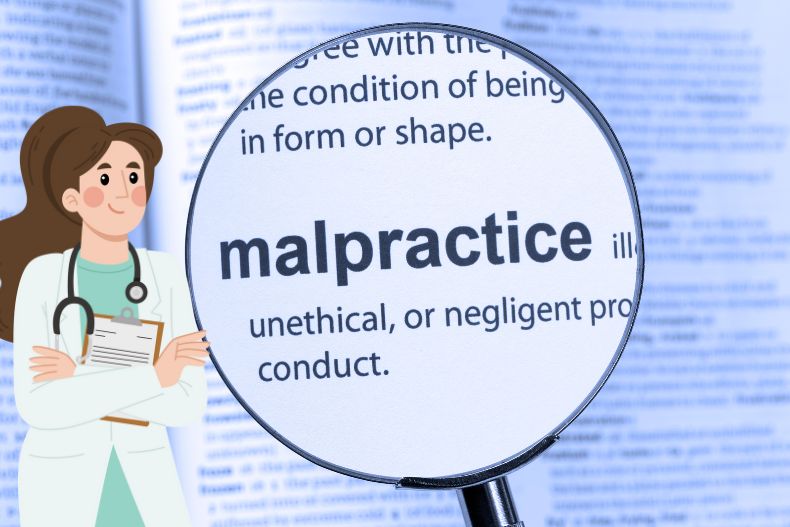Did you know that medical malpractice in the United States was one of the leading causes of death in the country? It accounts for 9.5%.
A medical malpractice suit technically falls under the purview of personal injury law, but there are special procedural rules that apply to medical malpractice claims that you must understand.
If you hope to succeed with your case, look for a personal injury lawyer who offers a free consultation.
Let’s find out more and discover the details that could make all the difference in your case.

Understanding Time Limits for Filing
The statute of limitations for medical malpractice varies from state to state and dictates the period within which you must file a lawsuit after experiencing medical malpractice. Time limits for filing a malpractice claim usually vary between one to six years from the alleged incident. Here are some important points to keep in mind regarding the time limits for filing your case.
- Timing of Injury vs. Discovery: In certain states, the statute of limitations starts counting from either the date of the injury or the date when the alleged malpractice took place. In certain states, the period begins from the moment the injury was detected or could have reasonably been detected. This “discovery rule” can be vital, particularly in situations where the injury is not immediately evident.
- Statute of Repose: In addition to the statute of limitations, numerous states have statutes of repose that establish a firm deadline for filing a medical malpractice lawsuit, regardless of when the injury was sustained or identified. Typically, these deadlines span from three to ten years from the date of the alleged malpractice.
- Exceptions for Minors and Incapacitated Individuals: Some states provide special provisions for minors or individuals deemed legally incapacitated at the time of the malpractice. In such situations, the statute of limitations can be suspended until the person reaches the age of majority or is no longer incapacitated.
- Notice Requirements and Pre-Suit Procedures: Certain states impose pre-suit notice requirements or mandatory pre-suit procedures, such as arbitration or mediation, as prerequisites to filing a medical malpractice lawsuit. Not adhering to these requirements can impact the timing and validity of the claim.
- Extensions and Exceptions: Under certain circumstances, like cases involving fraud, intentional misconduct, or the discovery of foreign objects left in the body after surgery, some states may make exceptions to the usual statutes of limitations. In certain cases, states may allow for extensions of the filing deadline for individuals who were unable to file due to physical or mental incapacitation during the incident.
Consulting with a qualified attorney who specializes in medical malpractice law can help ensure that you comply with the relevant statutes and protect your legal interests.
State-by-State Statute of Limitations
The timeframe for filing a lawsuit in each state is significant when it comes to medical malpractice claims. The time limits can vary greatly from state to state, so it is important to familiarize yourself with the specific regulations in your state.
As an example, in California, the statute of limitations for medical malpractice is typically three years from the date of injury or one year from the date the injury was discovered. However, in New York, the typical timeframe is two and a half years from the date of the malpractice incident.
Typically, in Texas, there is a two-year timeframe for filing a medical malpractice lawsuit. However, there are exceptions for cases involving foreign objects left in the body or instances of fraud or intentional concealment. It is important to consult with a legal professional to gain a thorough understanding of how the statute of limitations applies to your specific situation in your state. Having a clear understanding of these limitations can help you respond quickly if you suspect you may have a case of medical malpractice.
Factors Impacting Statute of Limitations
When considering the statute of limitations for medical malpractice claims in your state, various factors can impact the timeframe within which you’re allowed to file a lawsuit. One consequential factor is the Discovery Rule, which specifies that the statute of limitations begins when the injury is discovered or should have been discovered through reasonable diligence. Remember that some states have a statute of repose that sets an absolute deadline for filing a claim, regardless of when the injury was discovered.
Another factor to consider is the Minor’s Statute, which may extend the statute of limitations for minors injured due to medical malpractice until they reach the age of majority. The Continuous Treatment Rule can extend the statute of limitations if the patient was under the defendant’s care for the same condition that resulted in malpractice.
State-specific laws, such as special provisions for cases involving foreign objects left in the body during surgery, can also impact the statute of limitations for medical malpractice claims in your state.
Importance of Seeking Legal Recourse
By taking legal action, you not only hold the responsible parties accountable but also help prevent similar incidents from happening to others. Consulting with a medical malpractice attorney can help you understand your rights, evaluate the strength of your case, and navigate the complex legal process.
Legal recourse is important for securing financial compensation for any damages or losses you have suffered due to medical negligence. This compensation can cover medical expenses, lost wages, pain and suffering, and other related costs. Without legal intervention, healthcare providers may not be incentivized to improve their practices or acknowledge their mistakes.
Pursuing legal action sends a message that medical malpractice isn’t acceptable and shouldn’t go unpunished. It can lead to changes in policies and procedures within healthcare facilities, ultimately contributing to a safer environment for patients. Don’t hesitate to seek legal help if you believe you have been a victim of medical malpractice.
Conclusion
You just discovered that it’s necessary to be aware of your state’s medical malpractice statute of limitations to protect your rights and seek legal recourse promptly. Understanding the time limits for filing a claim and the factors that can impact the statute of limitations can make a significant difference in your ability to pursue justice for medical negligence.
Don’t wait; take action and consult with a knowledgeable attorney to ensure your rights are protected.











